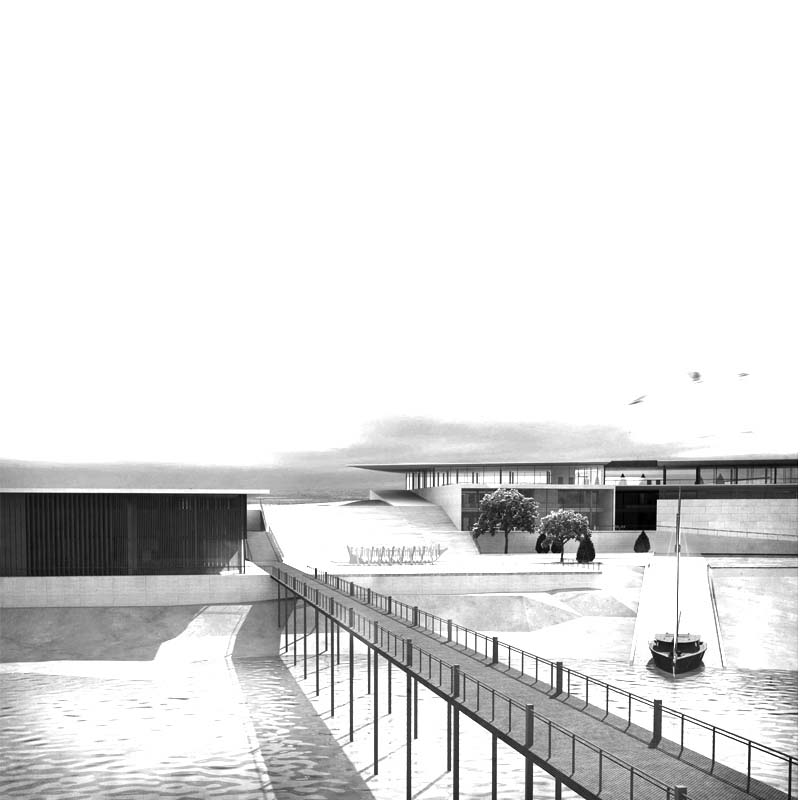

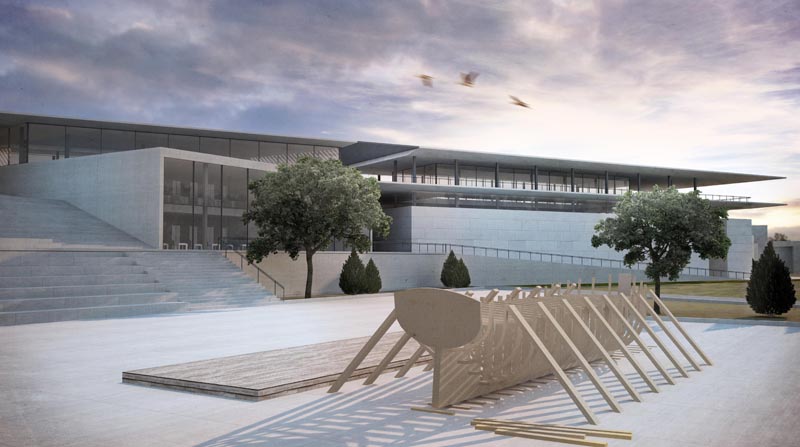

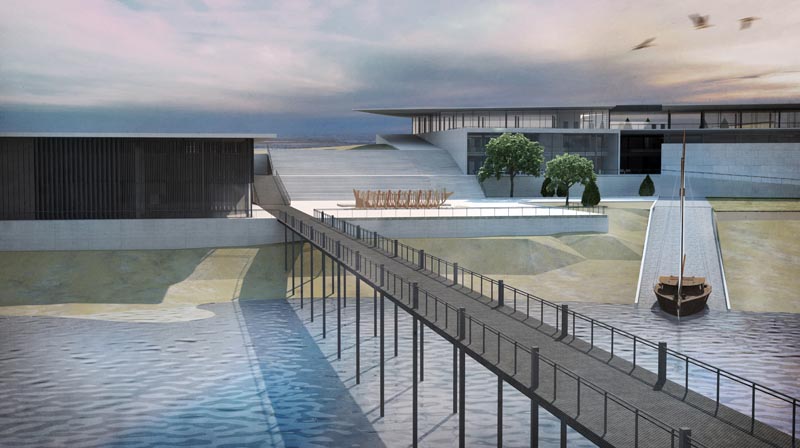

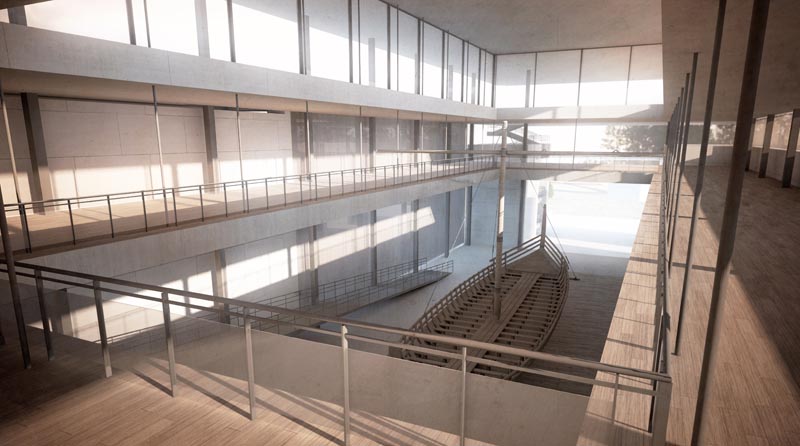





This thesis is about building an Experimental shipyard for wooden boats in Salamina isle. Specifically the building will be located at the far end of Punta peninsula in Ampelakia; opposing the Perama shipyard and neighboring with the archaelogical place of the ancient city of Salamina, the ancient port and the sea area where the naval battle of Salamina took place. Today there is a shipyard and ship refinery operating in the area leaving the historical place unexploited. The environmental degradation along with the abandonment and abuse of land and sea has led to deprecation and indifference for the area. Recognizing the historical importance of the region and the importance of the local shipbuilding tradition we created a center in which will be operated fully equipped wooden shipbuilding workshops and classrooms, auditorium and exhibition spaces, with the ambition to bring the human element in the area, create jobs and people (researchers, students, amateurs, etc.) can learn the art of wooden shipbuilding, which is inextricably linked with the history and culture of the island.
In addition they can come to contact with the traditional and modern techniques and take part in the 'building' of a vessel from the design and cutting of wood to the construction and its launch. That way they will participate in an experiment which will have as catalysts the current knowledge and techniques, in the environment of modern times and draw conclusions and new knowledge on shipbuilding. The Centre will include a museum and exhibition spaces and a library concerning modern and ancient Salamis, shipbuilding and other matters directly or indirectly related to the operation of the Centre. The ultimate objective of the Centre is to upgrade the overall area in order to become accessible to the public so that visitors can wander the site of ancient Salamis to limit the operation of dismantling facilities and yards and give the region a more human character.
Supervisor: Paniyiris Costis
Reference Number: 558
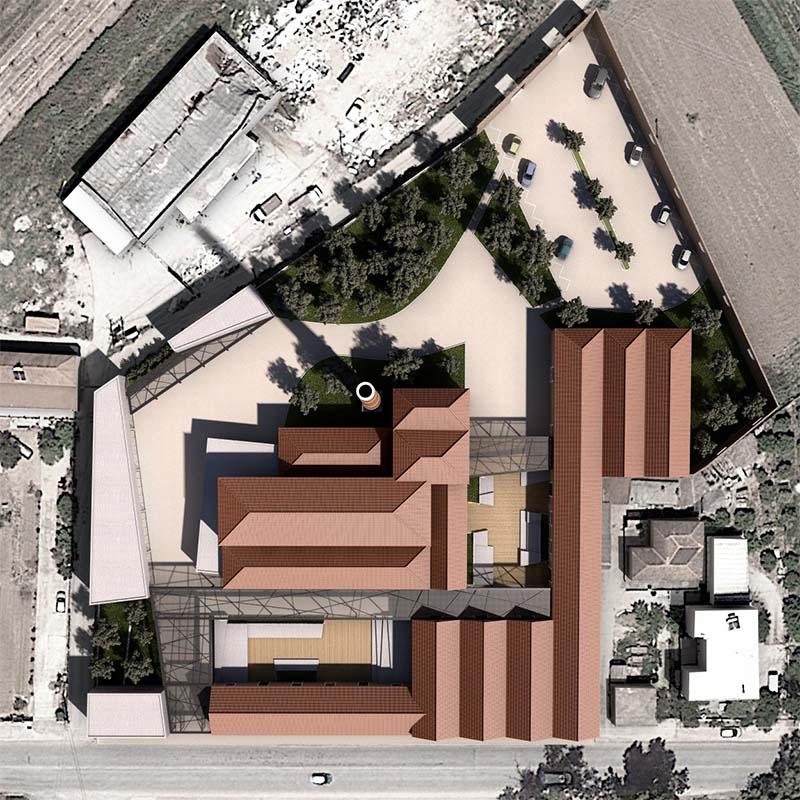







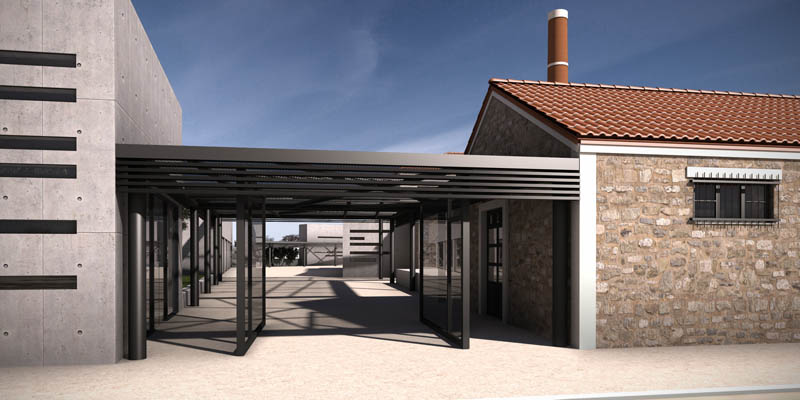



The purpose of this thesis is the re-use of the original, old factory buildings of Kyknos in Bolati, Argolida and,in so doing, reviving the wider region of Argolida.To be specific: the ways in which sites can be used in relation to the development of cultural life in Argolida, in conjunction with preserving the memory of the industrial unit by converting it into a museum per se.
The focus of this study is three-fold: a comparison between the old and the new, the visitor v. the permanent resident, and the birth of the industrial unit. Moreover, my main concern is to demonstrate respect towards the industrial heritage of the area, specifically, a study of the plot and the creation of a new architectual design which not only blends in harmoniously with that of the existing buildings, but also creates a dynamic link between these and those already in existence. On the one hand, the new alignments follow the orthogonal grid of the existing buildings, thus allowing a mild form of intervention to the precincts, whilst, on the other hand, permitting the creation of a new tour of the grounds to emerge completely.
With regard to the materials used in the new construction, special attention has been paid to their relationship with those of the existing buildings.Chronologically, the factory was built in 1937 and up to 1945, additions were made with brick and concrete. In order to achieve a discreet intervention, my proposal includes the construction of a mild-faced concrete, together with constructions of metal and glass, so as to achieve the transparency required to enable the outer shells of the preserved buildings to remain visible to the visitor.
To sum up, my intention is to create a space which will both contribute to, and stimulate,cultural, social actions and activities, with the ultimate aim of bringing a new pulse to the nearby urban centres, whilst simultaneously reviving the wider region of Argolida.
Supervisor: Adamakis Kostas
Reference Number: 546
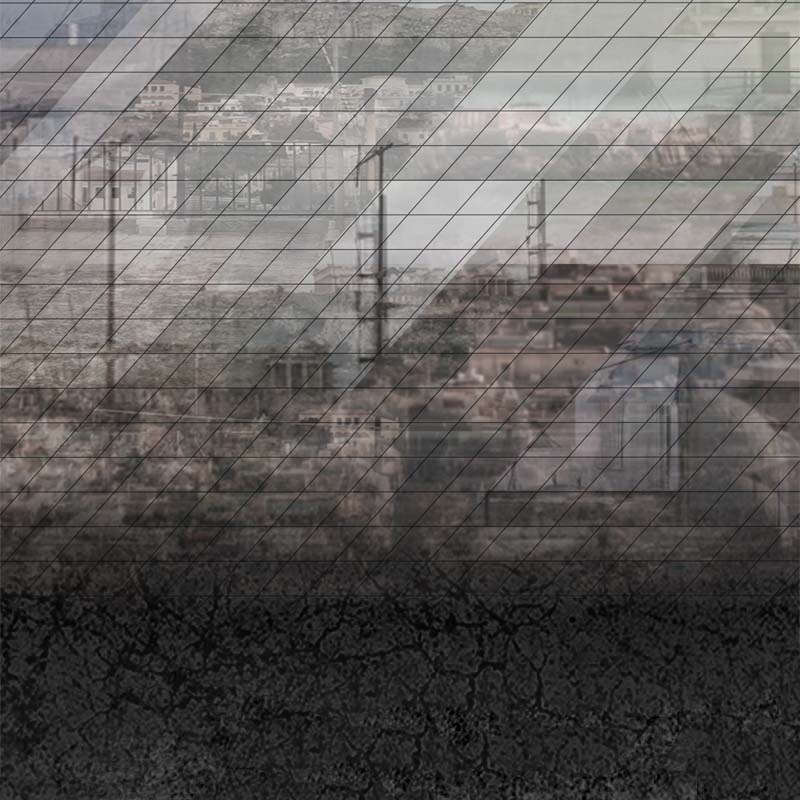



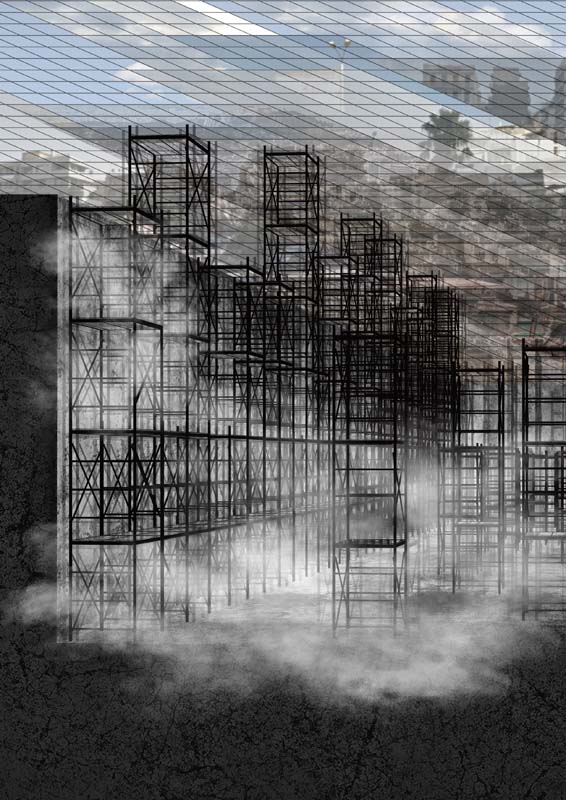





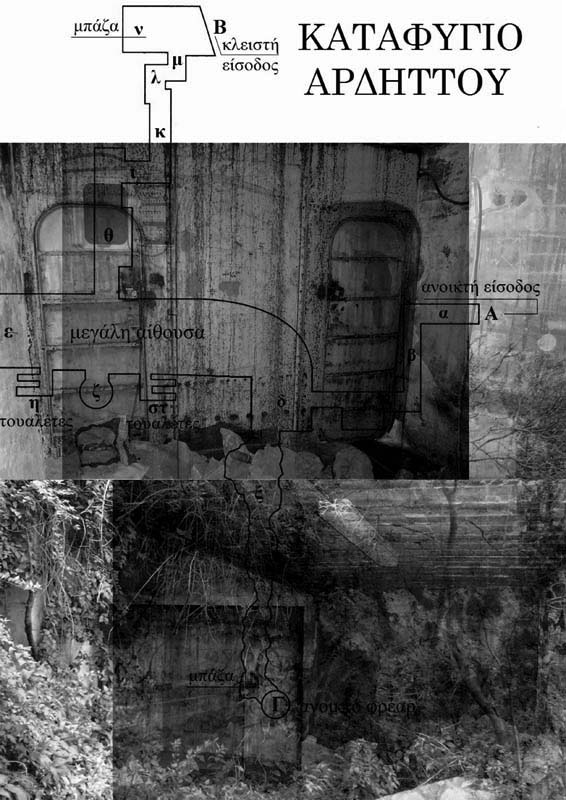

This thesis attempts to approach the meaning of outcast from a spatial and a social point of view, through the prism of bipolarisation.
Αn object, a subject, an action or an idea could be considered as an outcast. The outcast carries the identity of negative pole since it is charged with a negative sign, whereas it is excluded and separated from its opposite, which is therefore charged positively and included in a context constructed by the society. We are searching for the elements which render something an outcast, namely the terms and conditions of every classification - evaluation.
Thus, by using the tool of bipolarisation, as a consecutive taxonomic process of outcasts production, through the action of exclusion, we try to look for outcasts within the contemporary urban landscape. This search process has revealed the notion of boundary, as a constructed element of the positive pole, used for the enforcement of the order, the protection of included components and the exclusion of outcastes. The subsets, though, since they are part of a broader total of the city, they claim more space, which leads to conflict. The outcome of this conflict is not only the modification of boundaries, but also the creation of gaps, which give the opportunity of contact and interaction between the two poles. These gaps constitute transition spaces - passages, thresholds of communication and conditions change in the interior of every subset.
In this thesis, we recognise the city as a structure full of subsets - enclaves, which are either sometimes evaluated with a positive sign or some others with a negative one, and we subsequently attempt to detect of the outcasted elements in this apparatus. In order to accomplish a more comprehensible analysis, the thesis is focused on the dipole over city - under city, by deploying the data produced by the theoretical analysis of urban landscape under crisis in Athens. By assuming that the outcast is placed underground, we are searching for and researching the material existence of underground Athens. We are collecting information and we are putting it in parallel with the meanings which are being investigated, in a constant search of their association elements.
In the end, we are choosing three underground spaces, in the interior of which we are constructing an atmosphere based every time on a basic detected element of outcast. Those areas are 1. the shelter, 2. a part of the ancient wall of the city of Athens and 3. the undermined and incised river of Ilysos. Every area is charged with a different characteristic of spoilage, 1. the a-logon, 2. the imprisoned and 3. the dead. All these are synthesising the atmosphere which describes and locates the theoretical context that was presented on a spatial level.
Supervisors: Tzirtzilakis Yorgos, Papadopoulos Lois
Reference Number: 568
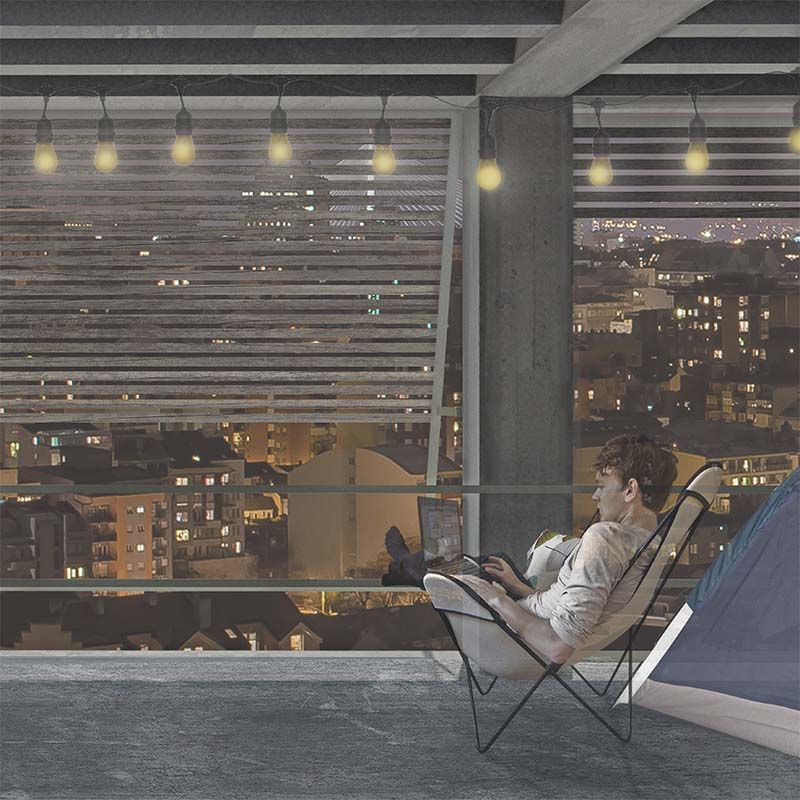



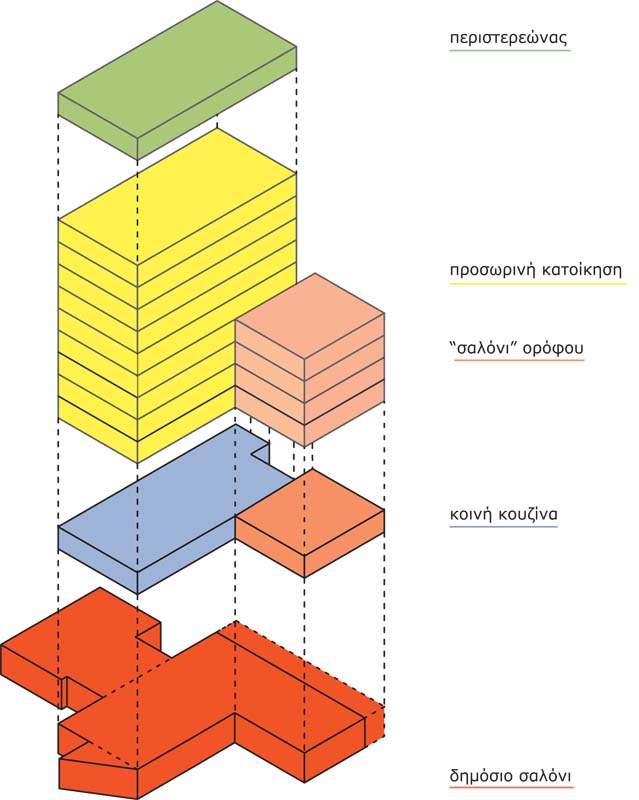





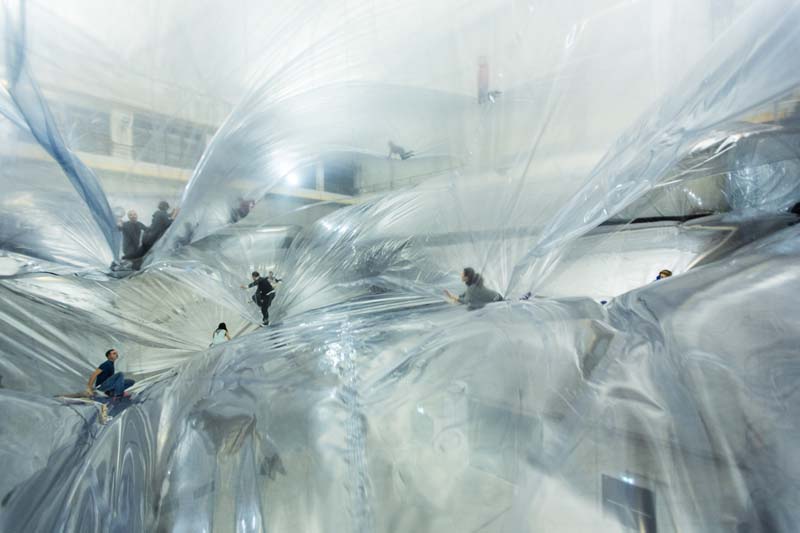

The aim of this diploma project is the development of a program that serves the semi-permanent habitation and its design implementation in available buildings of the city center. The phenomenon of contemporary urban nomadism and population mobility is becoming increasingly intensified. Populations travel for professional, family, survival, study reasons, etc. Those movements are often of temporary character of permanence. Such permanence allows the subject to be for a period of time member of each city, to give and take in a transaction with it, setting its own boundaries. The diploma project examines the interaction between local and global, the accumulation of building stock in city centers, the trans-local habitation, the dialectic of settlement and the "liberation from the shackles of place".
Supervisor: Paniyiris Costis
Reference Number: 556
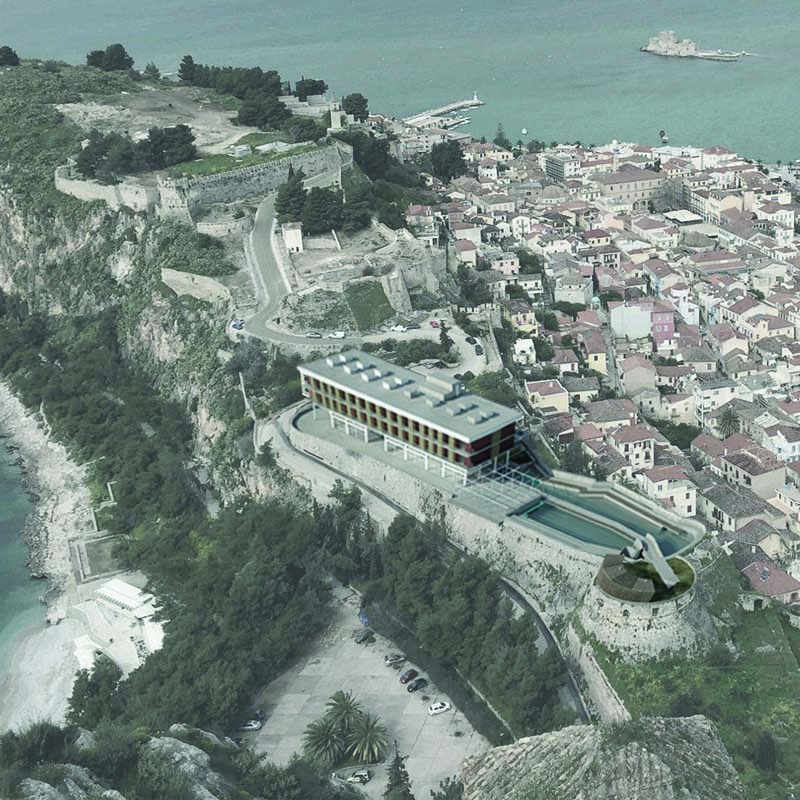

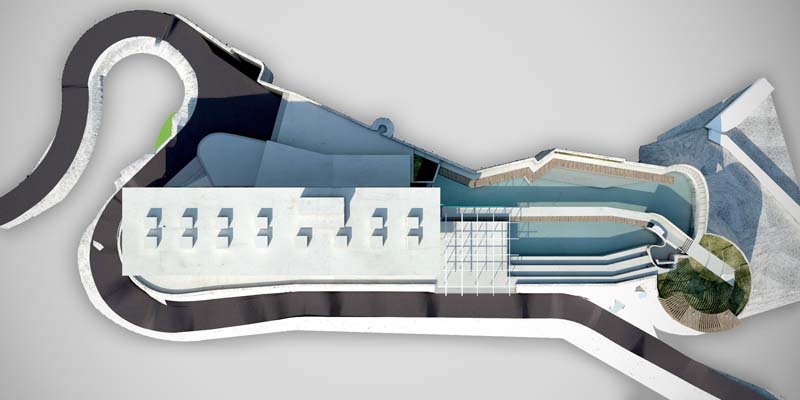

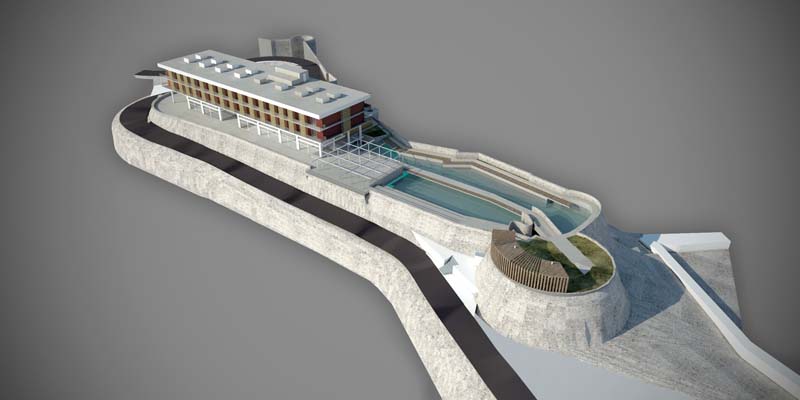

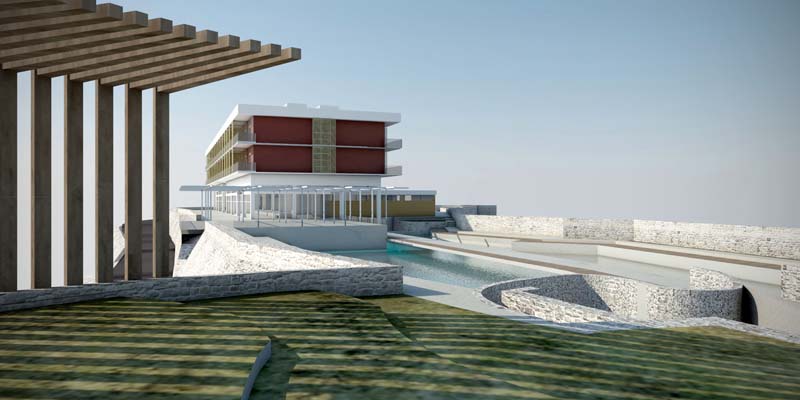

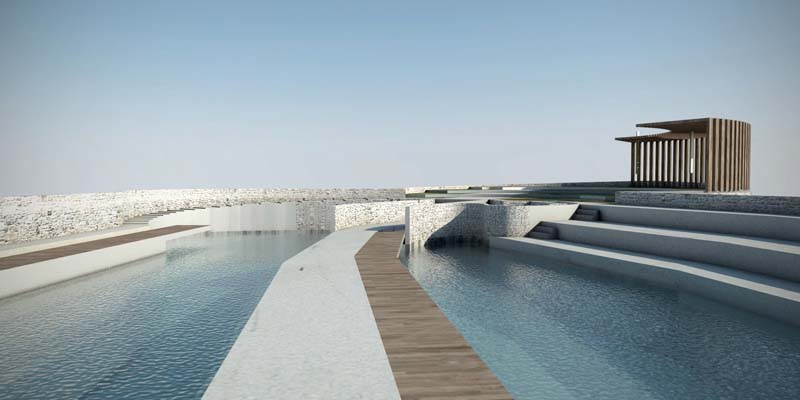

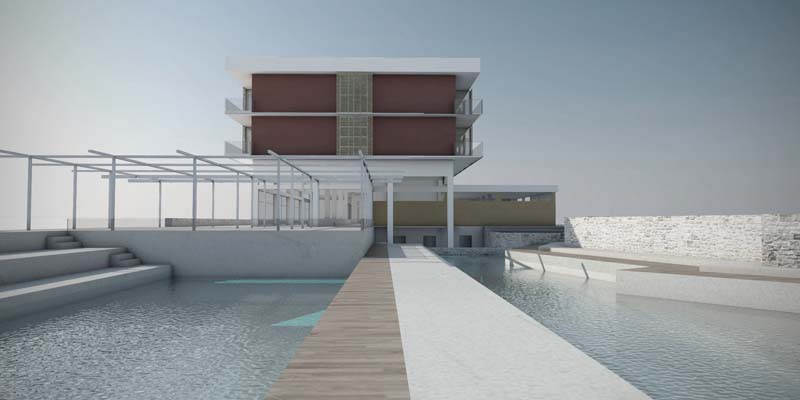

Multiplex of display and manufacture of costumes in XENIA in Nafplio
This thesis has as a subject of study the housing of a costume museum in the area of the abandoned Xenia hotel in Nafplio, on the hill of Acronafplia.
It is a three story building of 3.293 m2 with a basement and a loft, designed by the architect I. Triantafillidis and functioned as a hotel from 1958 until the 1999.
The Costume Culture Museum is not a conventional museum but aims at the interaction of clothing production and their display. Besides the central exhibition located on the ground floor, the first floor is going to house small studio-exhibition rooms for rent for designers.
On the second floor, shelters were designed both for designers and for guests of the museum. At the same time, the central exhibition hall will be configured properly and will host fashion shows (catwalks)
During summer the fashion shows will be hosted in the outdoors where an 800 m2 pool will be built. At other times the pool will be free for use from the public with changing rooms and showers in the basement.
Both inside and outside the building there are cafes and a store for the financial support of the multiplex. On the second floor are the staff’s offices, while in the basement, storage areas were designed according to the rules of the maintenance of fabric and clothing items.
Regarding to the museological program of the building, the exhibits come from the collections of the Peloponnesian Folklore Museum with garments and accessories from both Greek and foreign designers.
The restoration of the building was chosen to be done without major changes and to maintain its simple form and style, after the necessary steps were taken of course, to clean the marks of time and vandalism. On floors, specifically, the typology of the rooms of the existing hotel are maintained.
The configuration of the outdoor space and the pool specifically, is done according to the engravings of the existing castle walls that surround the building, always trying to maintain and highlight it.
Supervisor: Colonas Vassilios
Reference Number: 565
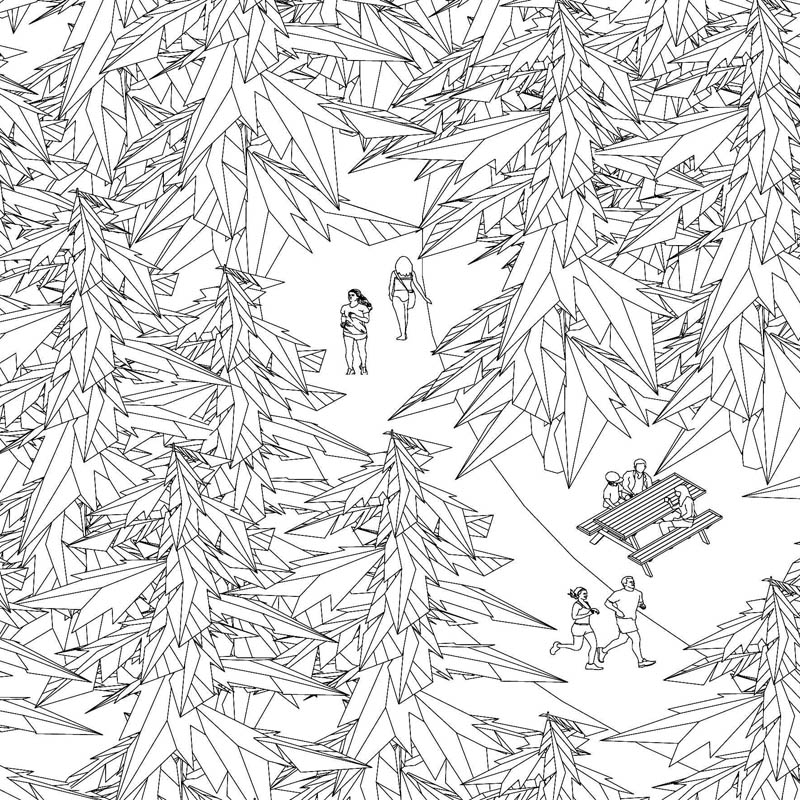

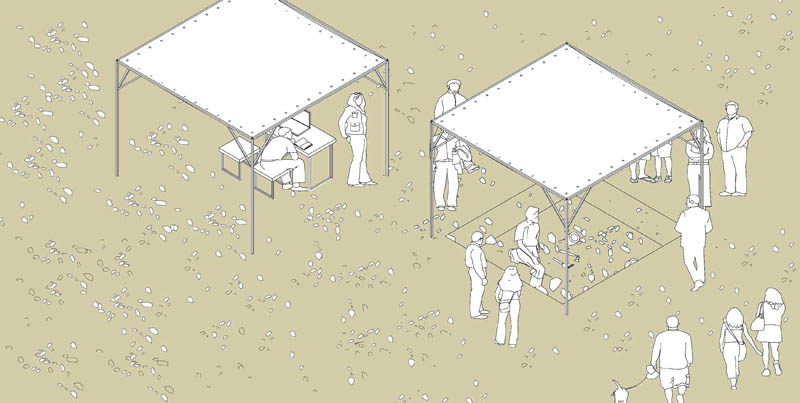

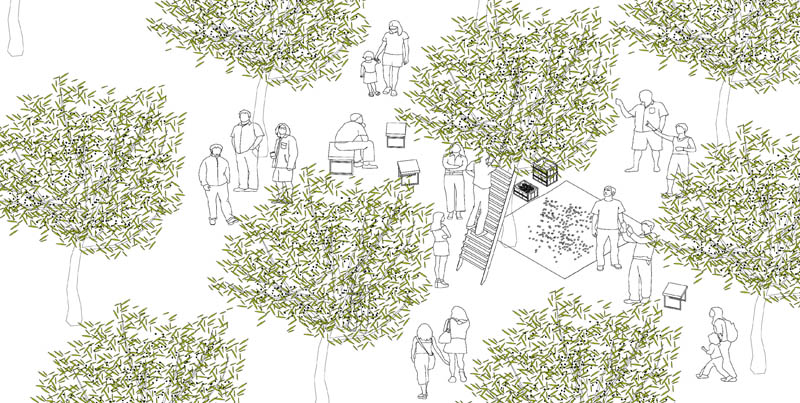



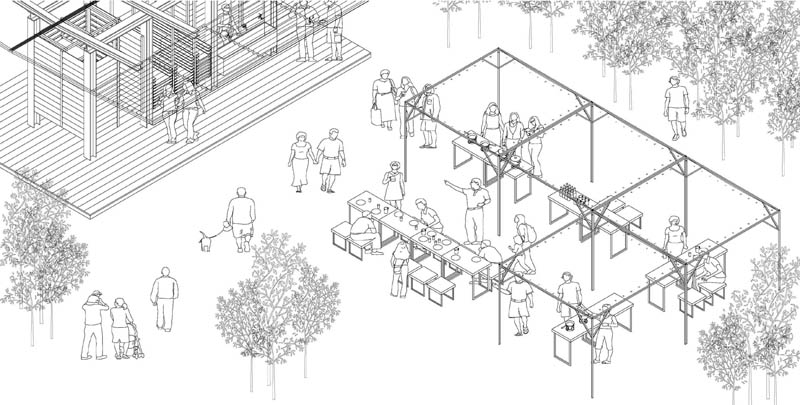



This thesis exposes the relationship between the archaeological ruins and the rural character of the landscape through the eyes of the tourist/visitor. The ruin – an inert entity of knowledge and memory converses with the crops and the graze lands - a living system, an active process in competitive terms. The contemporary approach and management of the archaeological remains leads to the unilateral manifestation of the ruins ignoring more than often the preceding procedures and the significance of the site/landscape that surrounds the ruins. Focusing on a new form of memory management and the environmental and cultural heritage as an active experiential process, the study surveys ways of manifesting archaeological and rural narrations in the context of an alternative way of identifying a site/landscape for the visitor.
Supervisors: Giannisi Phoebe, Trova Vasso
Reference Number: 533


Human intervention in the natural landscape of Goritsa for operation of the quarry has left its perminent signs. The powerful terrain, and existing configurations and structures for the operation of the quarry fueled our interest in exploiting this position aiming to upgrade the area. The steep slopes and the relationship with the sea played a decisive role in the final selection of the site for the conference center and hotel complex design.
The lack of a large conference center in the city of Volos, for scientific conferences, lectures and presentations makes the creation of it necessary, which can meet the needs not only of the city and the wider region. The convention center combined with a suitable hotel complex that will operate as supportive to the other hotels in Volos will become a huge tourist attraction and will contribute to the economic stimulus in the region.
This paper aims to analyze the design strategy, structure and organization of the building and will refer to the ''public space'' of delegates, tourists and residents of the city that aspires to be the proposed building.
Supervisor: Adamakis Kostas
Reference Number: 536
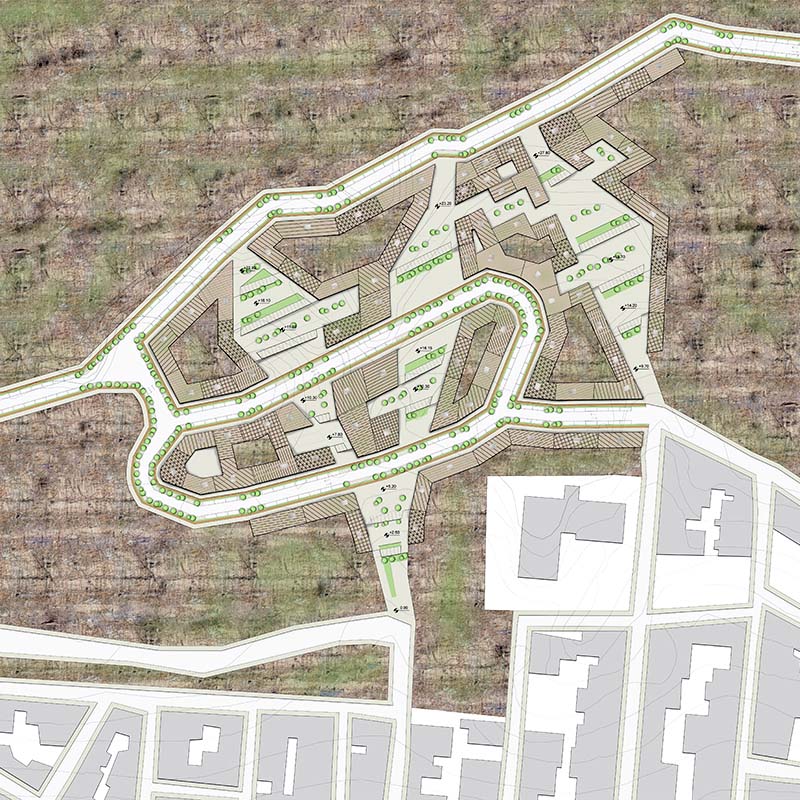











The diploma thesis focuses on the expansion of the city planning in the area of the old quarries in Tourkovounia.
The mountain range of Tourkovounia is situated between four municipalities of Athens, which it unites and separates at the same time. Due to the pressure admitted to the area from the expansion of the urban fabric, Tourkovounia now comprises two distinct areas. The first one is now a grove while the second is an off-plan area at «Tourkovounia – Omorfokklisia» district and the former quarries. It consists of three hills axially mounted, with a strong presence of the damaged geophysical environment due to the exploitation of the quarry area. The limestone site is trapped within the urban fabric, which it abruptly interrupts, and it becomes an urban green island, completely surrounded by the city.
The proposal seeks to associate with the landscape created by the quarrying and the manner in which it was produced. There is an atttempt to conserve the terrain, by creating "canyons" and placing the buildings under arable land. This is a reversal of the city, which is now growing under the ground level and follows the relief of the landscape.
Supervisor: Trova Vasso
Reference Number: 548

